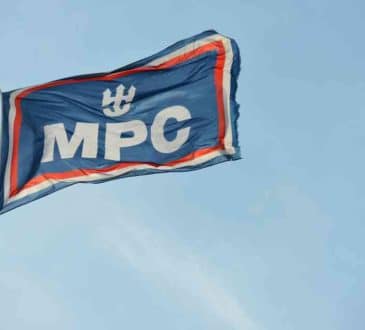Identifying Your Buyer Persona: Key Questions to Ask Yourself When Creating a Target Audience

Your message changes based on your lifestyle goal and business culture. What are you willing and not willing to do? Provide more value for yourself and your team and create the business culture that helps you live the lifestyle you deserve. Your final offer is your end product, it’s what you want people to ultimately pay you for. The offer is valuable, but so is the way you communicate and outreach about it.
Crafting your message is all about hearing and understanding your audience. You must tailor what you say and how you say it to strike a nerve with your ideal customer. Before you do that, you need to know whom you are talking to.
What is a Buyer Persona?: A buyer persona is a profile of your target audience. It may include: demographics, location, hobbies, concerns, motivations, values, influences, goals, etc. To get to the bottom of your buyer persona, research your market to learn about who is buying from you and who should buy from you.
Understanding your persona is critical for every aspect of your business. To create or improve your offer, you need to know your persona. Many brands have about 3 to 4 main buyer personas that contribute to their total sales.
What Do You Need From a Persona to Craft an Offer?: You need to know how your product or service helps your customer solve their issues. The best offer alleviates one (or more) of their pain points. Your message must help them overcome buying obstacles at some point in the journey as well. Effective offers entice your customers and engage them. Each state of the buyer journey offers a chance to establish a relationship.
Before you can figure out the best offer, you have to know whom you are making it for. You may identify a couple of key personas and knowing the differences can also help you segment your messages and create tailored offers to reach your most likely customers. One thing that can help is listing out the pain points you uncover – what problems does your persona have? Which obstacles prevent them from choosing you as a solution?
Why Align Your Offer with Your Lifestyle Goal?: Lifestyle goals are what we want to get from life outside of work. Of course, we all want to make money, and we all want to grow our businesses. At the end of the day, though, what do we want for our LIVES? It’s easy to lose sight of lifestyle goals when creating an offer. Make sure the offer you present does not overwhelm you or cause burnout.
Balance is crucial when it comes to your offer vs. lifestyle goals. To get everything you want out of life AND your business, you’ll need to keep marketing momentum going. Keeping your brand alive is important, but so is finding balance. Automating, delegating, and outsourcing can improve your balance while also keeping your momentum going.
How to Craft Your Message with Confidence?: Your message changes based on your goals. What you were aiming to accomplish 6 months ago can be different from your primary goals now. Your resources also impact your offer. If you automate, delegate, and outsource, you may have a greater capacity to make different offers than if you try to do it all alone. Constantly reinvent yourself, add new offerings, craft new ideas, form partnerships – keep it flowing! Keeping the momentum going is vital for businesses in ALL industries, no matter what their end offer is. It’s about staying agile and adapting your message to where you want to go.
What Is a Value Ladder?: Having multiple offer tiers opens your business up to a huge range of potential customers and makes it a lot easier to convert them to a tier that suits them. That’s a value ladder – it may not always work like a funnel, and that’s okay. The lower ticket offers on your ladder allow you to appeal to customers at different price points, ultimately helping you achieve your business goals. The purpose of the value ladder is to include several offers at different levels. Essentially, it is an outline of your key offers that increase in value and cost.
You’ll build on these ideas and continue adding ladder steps over time. Eventually, the bigger ideas will come. You may have clients asking for add-ons or upgrades you don’t yet have. By starting on your value ladder, you can grow your offer that best suits your business needs. You’ll have a chance to implement customer feedback and create powerful offers. Some additional benefits include:
- How to Understand Your Customer Journey?: The value ladder is not necessarily a funnel, so customers may not move up each step. Breaking your offers into value steps will still help you to understand the customer journey.
- How to Sell to Customers Under All Budgets?: Some customers may never have the money for your biggest offer. Having a clearly outlined value ladder helps you reach customers in more income and budget tiers.
- How to Build Relationships?: Lower-priced, valuable offers help you to build relationships with customers and prospects. They allow you to engage with more people, which can pay off big time later.
- Why Up-Sells and Down-Sells Are Important to Have?: With a value ladder, you can propose an alternative, a down-sell. In reality, a customer may not be ready for your highest offer. But because you started marketing that and then offered a less expensive alternative, they are more likely to take it. This technique only works when you have lower-tiered options to provide.
- How to Diversify Your Offering?: A value ladder helps you diversify your income, so you don’t need to only rely on your big offer. Instead of needing twenty $2,500 customers, maybe you need a few extra customers spending $1,000 a month to meet your goals.
- How Diverse Pricing Wins Customers?: Whether you have a new offer you’re looking to price or an entire list of services already, a value ladder can help with pricing. If you’re adding a medium-value item, you can assess a reasonable price based on the cost of the offers below and above it.
A value ladder is an important tool for every type of business. Whether you’re in the healthcare industry, beauty, fitness, legal, insurance, or anything else, a value ladder is something to have in place.
Written by Valeh Nazemoff.
Have you read?
Three Challenges That Many Businesses Face In Turbulent Times by Dr. Oleg Konovalov.
Out of The Box: Optimizing Decision Making For Personal and Professional Prosperity In a Relentlessly VUCA World by Madelaine Claire Weiss.
Rituals as a coping mechanism by Riccardo Pandini.
Best Fashion Schools In The World For 2023.
Richest NFL (National Football League) Players, 2023.
Add CEOWORLD magazine to your Google News feed.
Follow CEOWORLD magazine headlines on: Google News, LinkedIn, Twitter, and Facebook.
This report/news/ranking/statistics has been prepared only for general guidance on matters of interest and does not constitute professional advice. You should not act upon the information contained in this publication without obtaining specific professional advice. No representation or warranty (express or implied) is given as to the accuracy or completeness of the information contained in this publication, and, to the extent permitted by law, CEOWORLD magazine does not accept or assume any liability, responsibility or duty of care for any consequences of you or anyone else acting, or refraining to act, in reliance on the information contained in this publication or for any decision based on it.
Copyright 2024 The CEOWORLD magazine. All rights reserved. This material (and any extract from it) must not be copied, redistributed or placed on any website, without CEOWORLD magazine' prior written consent. For media queries, please contact: info@ceoworld.biz
SUBSCRIBE NEWSLETTER








